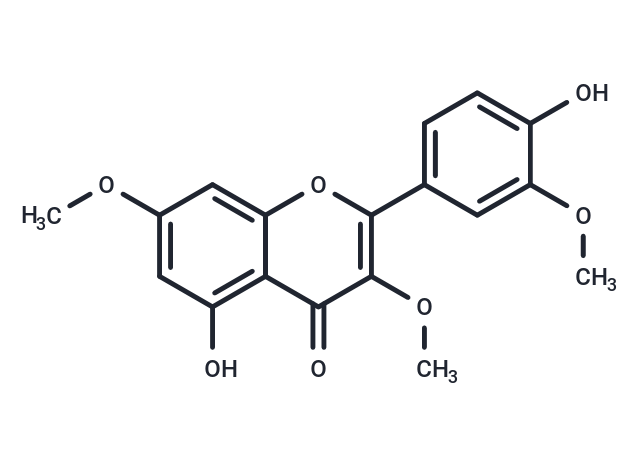Shopping Cart
- Remove All
 Your shopping cart is currently empty
Your shopping cart is currently empty

Pachypodol, a methoxyflavonoid isolated from Pogostemon cablin Bentham, has antioxidant and cytoprotective properties and inhibits the growth of CaCo 2 colon cancer cell lines in vitro.Pachypodol protects neonatal rats from anesthesia-induced apoptosis in the developing brain through modulation of the JNK/ERK pathway.PDGFRα kinase inhibitory activity in macrophages exposed to STING agonists.

| Pack Size | Price | Availability | Quantity |
|---|---|---|---|
| 1 mg | $117 | In Stock | |
| 5 mg | $289 | In Stock | |
| 10 mg | $455 | In Stock |
| Description | Pachypodol, a methoxyflavonoid isolated from Pogostemon cablin Bentham, has antioxidant and cytoprotective properties and inhibits the growth of CaCo 2 colon cancer cell lines in vitro.Pachypodol protects neonatal rats from anesthesia-induced apoptosis in the developing brain through modulation of the JNK/ERK pathway.PDGFRα kinase inhibitory activity in macrophages exposed to STING agonists. |
| In vitro | Pachypodol, acting as a flavonol, is capable of inhibiting the growth of CaCo 2 colon cancer cell lines in vitro, and exhibits certain antioxidant and cytoprotective effects in HepG2 cells[1]. |
| Molecular Weight | 344.32 |
| Formula | C18H16O7 |
| Cas No. | 33708-72-4 |
| Smiles | COc1cc(O)c2c(c1)oc(-c1ccc(O)c(OC)c1)c(OC)c2=O |
| Relative Density. | 1.31g/cm3 |
| Storage | store at low temperature,keep away from moisture | Powder: -20°C for 3 years | In solvent: -80°C for 1 year | Shipping with blue ice. | |||||||||||||||||||||||||||||||||||
| Solubility Information | DMSO: 80 mg/mL (232.34 mM), Sonication is recommended. | |||||||||||||||||||||||||||||||||||
Solution Preparation Table | ||||||||||||||||||||||||||||||||||||
DMSO
| ||||||||||||||||||||||||||||||||||||

Copyright © 2015-2025 TargetMol Chemicals Inc. All Rights Reserved.